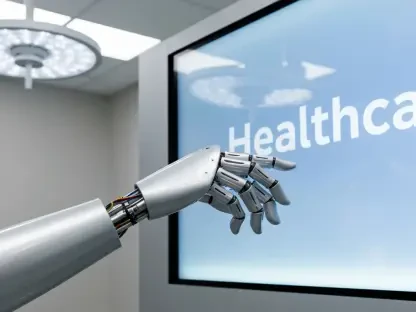Overview of the U.S. Health Care System Amid Demographic Shifts
The U.S. health care system, a vital pillar of the nation’s economy and societal well-being, is facing unprecedented challenges as demographic changes reshape its foundation. This massive industry, which accounts for nearly 18% of GDP, supports millions of jobs and delivers essential services to a population with increasingly complex needs. Hospitals, nursing care facilities, and specialized medical fields form the backbone of this sector, providing care across urban centers and rural landscapes alike. Yet, beneath the surface of this critical infrastructure lies a growing concern: how can the system sustain itself with a shrinking immigrant workforce and an aging population?
Demographic shifts are transforming health care delivery in significant ways. An aging population, combined with declining birth rates, places immense pressure on resources, especially in geriatric care and chronic disease management. At the same time, a reduction in immigrant workers, who often fill crucial roles in underserved areas, worsens staffing shortages. These changes threaten the system’s ability to meet rising demand, particularly as rural hospitals struggle to stay operational.
Key stakeholders, including health care providers, policymakers, and patients, navigate this changing landscape alongside technological advancements and regulatory constraints. Innovations like telemedicine offer hope for bridging gaps, while policies on immigration and workforce training shape the industry’s path forward. Understanding these dynamics is essential to fully grasp the challenges and opportunities facing health care today.
Key Trends and Data on Health Care Workforce Challenges
Emerging Trends in Labor Shortages and Demographic Demand
A critical trend shaping the U.S. health care landscape is the severe shortage of skilled professionals, especially in specialties like geriatrics and psychiatry. These fields, essential for meeting the needs of a growing elderly population, struggle to attract new talent due to lengthy training periods and relatively lower pay compared to other medical disciplines. This gap leaves many patients without access to specialized care, particularly in less populated regions.
Demand for health care services continues to surge, driven by an aging demographic. Projections show that the number of Americans aged 65 and older will rise from 58 million today to 82 million by 2050, a staggering increase that highlights the urgent need for more providers. Immigrant workers have historically played a key role in meeting this demand, often taking on low-paying but essential positions in rural and underserved communities, where domestic workers are less likely to serve.
Emerging opportunities, however, provide a glimmer of hope. Technology, including telemedicine platforms and automation of administrative tasks, offers potential solutions to ease workforce pressures. These tools can extend the reach of existing providers, enabling care delivery to remote areas and reducing burnout among staff. Nonetheless, technology alone cannot fully address the human element required in patient care, underscoring the need for comprehensive strategies.
Statistical Insights and Future Projections
Data on workforce composition reveals the significant contribution of foreign-born health care workers, whose share has risen steadily over recent years, reaching 16.52% by current estimates. This group often fills critical gaps in nursing homes and hospital night shifts, roles that are less appealing to domestic candidates. Their presence is vital to maintaining service levels, especially as overall staffing numbers in certain sectors decline.
Economic forecasts paint a concerning picture, with negative net migration expected to reduce U.S. GDP by 0.3% to 0.4% in the near term. This downturn reflects the broader implications of a smaller labor pool, with health care being among the hardest-hit sectors. The loss of immigrant talent not only impacts immediate staffing but also hinders long-term economic stability tied to this essential industry.
Looking ahead, access to health care, especially in rural areas, faces mounting challenges. Service closures, including labor and delivery units, have accelerated, with only 42% of rural hospitals offering such care today. Without intervention, these trends suggest a future where disparities in health care access widen, leaving vulnerable populations with limited options for essential services.
Obstacles Facing Health Care with Reduced Immigration
The decline in immigrant labor, driven by restrictive policies, poses a formidable obstacle to the health care system’s stability. High visa fees and strict caps on international students have limited the inflow of talent, leaving hospitals and clinics struggling to fill positions. These barriers disproportionately affect roles that require cultural diversity and a willingness to work in challenging environments, roles often filled by foreign-born individuals.
Cultural and economic factors further complicate the situation, as domestic workers show limited interest in high-demand but low-paying positions such as home health aides. This reluctance stems from inadequate compensation and the physical and emotional toll of these jobs, creating a void that immigrant workers have traditionally filled. Without incentives or structural changes, this gap is unlikely to close through domestic efforts alone.
Existing providers bear the brunt of these shortages, facing increased workloads and early retirements among experienced professionals. Medical students, meanwhile, gravitate toward more lucrative specialties, leaving critical areas like geriatrics understaffed. Addressing these challenges requires innovative approaches, such as targeted training programs and policy reforms to attract and retain talent in essential fields, ensuring the system can withstand current strains.
Impact of Immigration Policies on Health Care Staffing
Recent immigration policies have significantly altered the landscape for health care staffing, with measures leading to a decline in the foreign-born population by over a million in a short span. Specific actions, including exorbitant H-1B visa fees set at $100,000 and rigorous green card vetting processes, have directly impeded the recruitment of skilled medical professionals. These restrictions disrupt the pipeline of talent that hospitals and clinics rely on to maintain service levels.
Uncertainty and apprehension among foreign-born workers and students compound the issue, as many reconsider their future in the U.S. amid shifting policy landscapes. This fear deters potential talent from entering or staying in the country, further shrinking the pool of available health care workers. The ripple effect is felt across facilities struggling to meet patient needs with limited staff.
Compliance with immigration regulations adds another layer of complexity, as health care institutions navigate legal hurdles to employ international staff. A pressing need exists for clearer pathways that balance enforcement with the practical demands of the sector. Streamlining visa processes and offering stability to foreign workers could help stabilize the workforce, ensuring that critical roles are filled without delay.
Future Outlook for U.S. Health Care Amidst Workforce Challenges
The trajectory of the U.S. health care system depends on navigating the dual pressures of an aging population and reduced immigration. Without significant intervention, the strain on resources and personnel is likely to intensify, particularly as the elderly demographic grows. This scenario could lead to diminished care quality and accessibility, especially for those in rural and economically disadvantaged areas.
Emerging solutions offer potential pathways forward, including tapping into domestic talent pools through incentives for medical students to pursue underserved specialties. Programs that provide financial support or career advancement opportunities could shift preferences toward fields like geriatrics and psychiatry. Additionally, community-based initiatives might encourage local workers to enter health care roles, addressing gaps at a grassroots level.
Innovation stands as a critical ally, with digital health tools poised to transform care delivery. Telehealth services and AI-driven diagnostics can enhance efficiency, allowing providers to manage larger patient loads despite staffing shortages. However, global economic conditions and policy shifts will continue to influence long-term sustainability, necessitating adaptive strategies that prioritize vulnerable communities and ensure equitable access to care.
Conclusion and Recommendations for a Sustainable Health Care Future
Reflecting on the extensive challenges that have unfolded, the U.S. health care system has grappled with labor shortages and immigration declines that tested its resilience. The strain on providers, coupled with policy-driven reductions in foreign talent, exposed deep vulnerabilities in meeting the needs of an aging population. These issues underscored a pivotal moment where strategic action became imperative to prevent further erosion of care delivery.
Moving forward, actionable steps emerged as vital to securing a sustainable future. Immigration reform tailored to skilled health care workers offered a direct means to replenish critical roles, balancing enforcement with sectoral needs. Simultaneously, incentives for domestic training in high-demand fields promised to cultivate a robust local workforce, while targeted investments in rural health care access aimed to bridge regional disparities.
Collaboration among stakeholders stood out as a cornerstone for progress, urging policymakers, providers, and educational institutions to align efforts. By fostering adaptability through technology and policy innovation, the industry positioned itself to deliver quality care despite demographic headwinds. These steps charted a hopeful path, emphasizing proactive solutions to safeguard health care for future generations.









